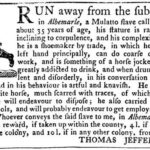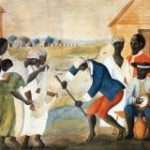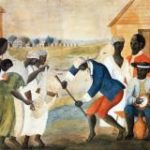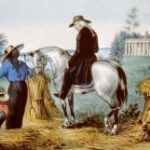In this activity, students will carefully analyze General Order 3 from Major General Gordon Granger which informed the people of Texas that “all slaves are free.” This activity is appropriate as a conclusion to the Civil War and the beginning of Reconstruction.
Learn About Black History, Culture and Politics
Learn about Black history in the United States before and after the Civil War; the Civil Rights Movement; the history of Africa; African American art; and African American trailblazers.
District of Columbia Compensated Emancipation Act of 1862
The 150th anniversary of the District of Columbia Compensated Emancipation Act of 1862
occurred in 2012. This bill was introduced to Congress to end slavery in the District of
Columbia. Many citizens and members of Congress alike noted that the legality of slavery in
the District of Columbia was inconsistent with the ideals and aspirations of the nation. Congress
approved the bill, and President Abraham Lincoln signed the act.
This activity features the District of Columbia Compensated Emancipation Act of 1862 and
other primary and secondary sources that tell the story of Congress’s role in this first major step
toward the freeing of enslaved African Americans. While intended for 8th grade students, the
lesson can be adapted for other grade levels.
13th Amendment: Abolition of Slavery
Slavery was embedded into America’s fabric by the time of the ratification of the Constitution. Do you think this affected how long slavery lasted in America and how it ended? Explore the National Constitution Center’s 13th Amendment Learning Module to learn more.
Jefferson and Slavery – for ELD students
Thomas Jefferson and Slavery

Thomas Jefferson, the man who wrote the famous line “all men are created equal,” was a life-long slave-owner. Over the course of his life, he would own 600 human beings, and at any given time there would be roughly 100 slaves living and working on and around Jefferson’s plantation and farms. This handout describes Thomas Jefferson’s views on slavery.
The Constitutional Convention: Slavery and the Constitution
History is the chronicle of choices made by actors/agents/protagonists in specific contexts. This simulation places students at the Constitutional Convention and asks them to engage in the most problematic issue the framers faced: how to deal with slavery. Although most delegates believed slavery was deplorable, it was so deeply entrenched that any attempt to abolish it would likely keep several states from approving the proposed Constitution. By confronting this issue, students will experience for themselves the influence of socioeconomic factors in the political arena, and they will see how political discourse is shaped by arguments based on morality, interest, and pragmatic considerations, often intertwined.
How Did the Constitutional Convention Deal with Slavery?

This short video explains the differing perspectives that emerged about the Constitution and slavery. Some, like Frederick Douglass, believed that the Founders put slavery on the road to extinction while others, like Roger Taney, believed that the Constitution was a slaveholders’ document. Professor Gordon Lloyd contends that the slavery clauses in the Constitution both limited and expanded slavery’s impact, and that the Founders alone do not bear responsibility for slavery’s later expansion.
Dolley Madison and Slavery

This short video presents Dolley Madison as a typical member of the antebellum slaveholding gentry. Dolley, like her southern contemporaries, saw slaves as property. Professor Catherine Allgor notes that when Dolley Madison began selling her slaves in the 1840’s, she was strongly criticized by the abolitionist press.
George Washington and Slavery

This short video analyzes Washington’s experiences as a “queasy slaveowner.” Having inherited and traded slaves as a younger man, Washington in later life gradually moved from being doubtful about the morality of the institution to being certain that the institution was “against the law of nature.” Professor W. B. Allen contends that Washington’s decision to free his slaves upon his wife’s death ensured that Mount Vernon’s enslaved families would remain intact and would be provided for.
